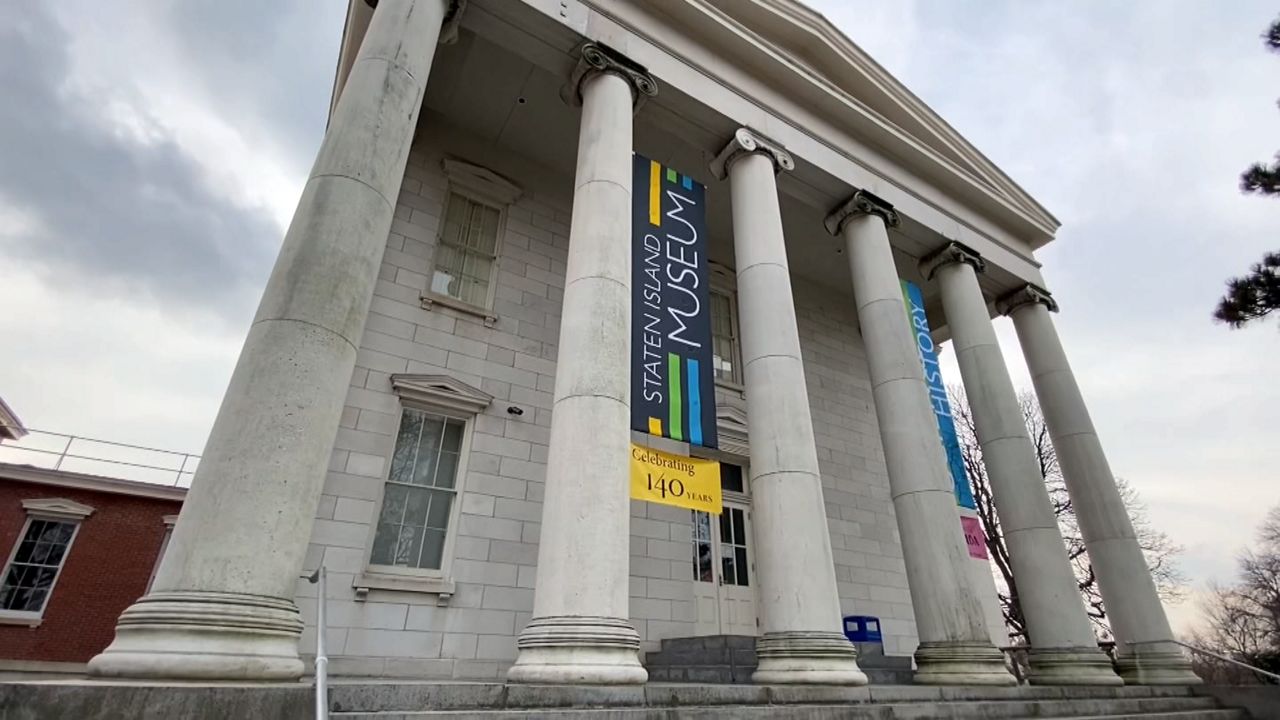STATEN ISLAND, N.Y. — Long before there was a Verrazzano Bridge, the view from Staten Island of The Narrows — the tidal strait that connects Lower and Upper New York Bay — was very different.
A painting depicting that vista is just one of the reminders of the borough's past at the Staten Island Museum.
"We have said in the past that we're a general interest museum but what that really means is that we have collections in art and natural science and history,” said Rachel Somma, communications manager at the museum.
Visitors will find the fossilized molar and jaw of a Mastodon, a creature that once lived on the island. There’s also a collection of art spanning 4,000 years from five continents.

Located on the grounds of the Snug Harbor Cultural Center, an historic former home for retired sailors, the museum was founded in 1881 by a group of 14 young Staten Island naturalists led by William T. Davis. They feared the growing community was taking a toll on the island's plant and animal species.
"Back then they had the forsight to understand how many of these species would not be around in years to come so they pooled their collections and through the years people started donating art and we started collecting historical documents and that's kind of how the museum came to be,” said Somma.
To celebrate the museum's 140 years, the collections team has selected 140 objects to share as on online exhibition and a number of the items are on view in the galleries.
There is the shoe shine box of Carmine Rizzo, who polished shoes on the Staten Island Ferry for more than three decades. There is also a memory from the Ferry John F. Kennedy, the one recently purchased by a group including Saturday Night Live’s Pete Davidson and Colin Jost. How about a piece of Chicle, the tree sap used to make chewing gum. Modern day chewing gum was actually invented on Staten Island.
"That's another almost lost part of Staten Island history but it is part of our history and it is here at the museum,” said Somma.
The museum also has one of the world's largest collections of Cicadas, the insects which in some cases only emerge every 13 or 17 years. Some are seen in an exhibition by artist Jennifer Angus called Magicicada.
Variety is the best way to describe the museum.
For more information, visit Plan your visit at statenislandmuseum.org.



